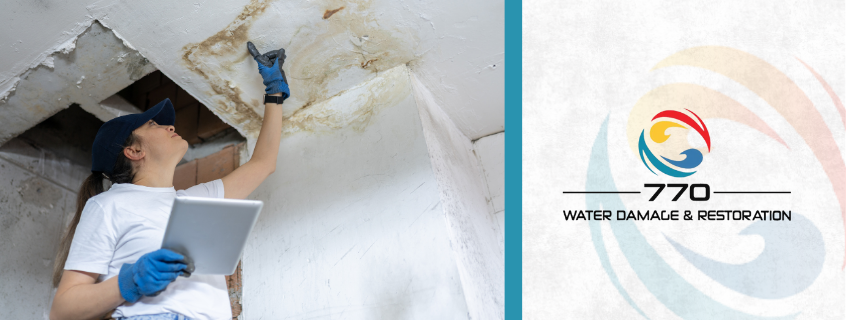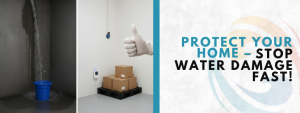
When you walk into a room and take a deep breath, what do you notice first? Is the air crisp and clean? Or does it feel stuffy, dusty, or even damp? Most people don’t realize how much indoor air affects their comfort, health, and mood. Whether it’s summer heat or winter chill, maintaining a healthy indoor climate isn’t just about adjusting your thermostat—it’s about making your home a place where your body can breathe and thrive every single day.
Creating and preserving a healthy indoor climate year-round might sound tricky, but with simple steps, smart choices, and the right materials, you can make your space feel just right—no matter the season. From reducing allergens to balancing humidity, and from choosing the right wall finishes to handling unexpected problems like water damage, every choice matters. Let’s explore how to keep your indoor environment as healthy and comfortable as possible.
To make this journey easier, we’ve put together practical ideas, expert suggestions, and real-life tips that are easy to follow and understand. You don’t need to be an expert—just a curious homeowner or renter who wants to breathe easier and live better.
What Exactly Is a Healthy Indoor Climate?
A healthy indoor climate means more than just being cool in summer and warm in winter. It refers to the overall air quality, moisture levels, and cleanliness inside your home or office that help keep your body healthy. Think of it like your home’s “invisible comfort zone.”
Here’s what makes up a healthy indoor climate:
- Balanced Temperature: Neither too hot nor too cold.
- Fresh Air Circulation: Letting old air out and fresh air in.
- Low Humidity: Helps prevent mold, mildew, and dust mites.
- Clean Air: Free from dust, chemicals, and allergens.
- Safe Surfaces: Materials that don’t trap moisture or give off harmful gases.
Many people suffer from allergies, headaches, or trouble sleeping because of poor indoor air. The good news? You can make easy adjustments that create a much better, breathable space.
Everyday Habits That Support a Healthy Indoor Climate
The way we live affects the air around us. Every day habits—some you may not even think about—can make a big difference in maintaining a healthy indoor climate.
Try these simple actions:
- Open windows regularly: Even just 10 minutes of fresh air exchange helps remove stale indoor air.
- Avoid smoking indoors: Tobacco smoke lingers and damages air quality long-term.
- Use exhaust fans in kitchens and bathrooms: These help remove moisture and cooking fumes.
- Dust and vacuum weekly: This keeps allergens from building up in carpets and fabrics.
- Keep plants: Certain houseplants can help absorb toxins (like spider plants or snake plants).
- Take off your shoes at the door: You’ll track in fewer dirt particles and bacteria from outside.
By keeping these small actions part of your routine, you’ll reduce harmful build-up and help support a healthy indoor climate every day.
Why Humidity Matters More Than You Think
Humidity isn’t just about feeling sticky. High or low moisture in your air can mess with your health, walls, and furniture. That’s why it’s one of the top things to manage for a healthy indoor climate.
Ideal Humidity Level
- 30% to 50% is the sweet spot.
- Below 30%? Air gets dry and can irritate your skin, eyes, and lungs.
- Above 50%? It’s a welcome mat for mold, mildew, and dust mites.
Easy Ways to Control Humidity
- Use a hygrometer to measure your home’s moisture.
- Run a dehumidifier in humid months (like summer or during rainy seasons).
- Use a humidifier in winter when the air is too dry.
- Fix leaks quickly—a leaky pipe or roof can change your air quality fast.
Here’s a quick comparison:
| Humidity Level | What You May Notice | What to Do |
| Below 30% | Dry skin, sore throat, static | Add a humidifier |
| 30–50% | Comfortable breathing, no mold | Maintain ventilation |
| Above 50% | Musty smell, mold, and condensation | Use a dehumidifier, check for leaks |
Balancing humidity is one of the easiest ways to improve how your space feels and how healthy it is.
Wall Choices That Improve Indoor Climate
Did you know that your wall materials can make or break a healthy indoor climate? Wall surfaces affect moisture control, airflow, and even indoor toxins. Wood wall panels, for example, don’t just add style—they help regulate air and insulate rooms.
Let’s look at a few popular wood panel types and how they contribute to indoor wellness:
Popular Wall Wood Panels and Their Benefits
| Panel Type | Description | Indoor Climate Benefit |
| Shiplap | Wooden boards with grooves that overlap neatly | Creates natural insulation and airflow |
| Tongue & Groove | Panels that lock together with a ridge and a slot | Great at sealing gaps to retain temp |
| Reclaimed Wood | Upcycled wood from barns or old buildings | Eco-friendly, often pre-aged to resist moisture |
| Beadboard | Narrow vertical planks with a ridge in between | Helps reduce echo, absorbs small moisture |
Why it matters: Wood naturally breathes, absorbs moisture, and balances air over time. It also doesn’t trap as many toxins or dust particles as synthetic wall materials might.
When your walls are made from the right materials, they can work with your heating and cooling system—not against it—to support a healthy indoor climate.
Keep Mold and Mildew Out of the Picture
Mold is more than a bathroom issue. It can grow behind walls, under flooring, or near windows—quietly ruining your air and health. One of the biggest threats to a healthy indoor climate is unchecked moisture, especially after water damage.
Signs of Hidden Mold:
- Musty smell even after cleaning
- Discolored walls or ceilings
- Breathing problems or frequent sneezing
- Peeling paint or wallpaper
Mold Prevention Tips
- Use moisture-resistant materials like treated wood or mold-resistant drywall.
- Seal cracks around windows, doors, and pipes.
- Regularly inspect under sinks and basements.
- Act fast after water leaks.
If you ever find yourself dealing with water intrusion, be sure to explore professional cleanup options right away. Even a small amount of hidden moisture can lead to long-term air quality issues.
Filters and Air Purifiers—Are They Worth It?
Yes—and here’s why: air filters trap airborne dust, pollen, pet dander, and even bacteria. They’re a smart choice for any space where you want a consistently healthy indoor climate.
Common Air Filter Types
| Filter Type | Description | Best For |
| HEPA Filters | Traps 99.97% of particles as small as 0.3 microns | Allergy sufferers, cleanest air |
| Activated Carbon | Absorbs odors and chemicals | Homes with pets or smoke |
| UV Filters | Kills bacteria and viruses with UV light | Hospitals or health-conscious homes |
Tip: Don’t forget to change your HVAC filter every 1–3 months, depending on how often you use the system or if you have pets. It’s one of the easiest ways to support better air indoors.
Flooring and Furniture—Surfaces That Matter
What’s on your floor matters as much as what’s in the air. Rugs, carpets, and soft furniture can trap dust, allergens, and moisture. Hard, sealed surfaces like tile or treated wood are better for promoting a healthy indoor climate.
Flooring Types and Air Quality Impact
- Hardwood or Engineered Wood: Easy to clean, low allergens
- Tile or Stone: Doesn’t absorb moisture
- Vinyl or Laminate: Affordable, but may off-gas chemicals over time
- Carpet: Cozy but holds onto dust and dander
If you love carpet, just make sure to vacuum often and steam-clean regularly. Also, try to avoid placing carpet in areas like basements or bathrooms where the moisture is higher.
Furniture matters too. Choose low-VOC (Volatile Organic Compound) finishes and fabrics to prevent off-gassing chemicals into your indoor air.
Let Nature Help: Houseplants and Natural Air Enhancers
Plants aren’t just pretty. Many of them clean the air while boosting oxygen and mood. Adding greenery is a natural way to maintain a healthy indoor climate.
Here are a few houseplants known for their air-purifying powers:
Best Houseplants for Cleaner Air
- Spider Plant: Removes carbon monoxide and formaldehyde.
- Snake Plant: Absorbs toxins and grows well in low light.
- Peace Lily: Excellent for removing mold spores.
- Aloe Vera: Absorbs airborne benzene and adds moisture.
You don’t need a whole jungle—just a few well-placed plants in sunny spots can make a visible difference. Just be sure not to overwater them, as that can encourage mold growth.
Seasonal Adjustments for Year-Round Balance
Every season brings its own challenges to indoor air. Summer can feel humid, winter gets dry, and spring or fall might trigger allergies. To keep a healthy indoor climate all year long, try this seasonal guide:
Seasonal Indoor Climate Checklist
Spring
- Open windows often for air exchange
- Dust and clean the ceiling fans
- Change air filters after winter use
Summer
- Use dehumidifiers in muggy weather
- Check for condensation on windows or pipes
- Keep blinds closed during peak sun hours
Fall
- Inspect the roof and gutters for leaks
- Deep clean carpets and upholstery
- Test heating systems before the cold hits
Winter
- Add a humidifier to prevent dry air
- Check window seals for drafts
- Keep air vents clean and unblocked
No matter the season, keeping your space clean, dry, and well-ventilated is key.
What to Do After Water Damage
Sometimes, things happen—pipes burst, roofs leak, or floods occur. These events can quickly destroy any sense of a healthy indoor climate. The quicker you act, the better chance you have at recovery.
Immediate Steps After Water Damage
- Stop the source: Turn off the water supply or cover roof leaks.
- Remove standing water: Use towels, buckets, or a wet/dry vacuum.
- Dry the area: Open windows, run fans, and bring in dehumidifiers.
- Inspect for hidden damage: Behind walls, under floors, and in ceilings.
Water damage that’s left untreated can lead to serious mold growth, poor air quality, and long-term wall damage. When in doubt, call in the experts for a detailed assessment and cleanup.
Don’t wait until problems get worse—early response saves time, money, and your health.
When It’s Time to Call for Help
Sometimes, despite all efforts, indoor problems get out of control. You might smell mold, notice unusual moisture on your walls, or feel sick more often at home. These are red flags that something in your environment may be off.
Professional restoration services can:
- Remove hidden mold safely
- Dry walls and floors after water exposure
- Repair structural issues from leaks or flooding
- Identify air quality risks
If you live in the Redondo Beach area and notice your walls are discolored or your home smells musty, click here to learn about available local services that can help restore your home to a healthier state.
Final Thoughts: Your Indoor Climate Is in Your Hands
You don’t need fancy tools or a contractor to create a better space. With mindful choices—like using the right wall materials, managing humidity, keeping things clean, and watching for mold—you can create a healthy indoor climate that supports your family’s wellness all year long.
Here’s a quick recap of what you can start doing today:
- Open windows to refresh the air
- Fix leaks as soon as they happen
- Use wood wall panels that naturally balance air
- Control humidity with the right tools
- Keep surfaces clean and dust-free
- Add houseplants for natural air cleaning
- Get professional help when signs of damage appear
The air inside your home matters more than you might think. Take small steps today and feel the difference tomorrow.
Frequently Asked Questions About Maintaining a Healthy Indoor Climate
How can I tell if my indoor climate is unhealthy?
If you often feel congested, notice moldy smells, or see condensation on windows, your indoor climate may be off. Pay attention to allergies, musty odors, and fluctuating temperatures as early warning signs.
What’s the easiest way to improve my indoor air quality?
Opening windows daily, using air purifiers, and changing HVAC filters regularly can make a big difference. Also, keeping surfaces clean and managing humidity helps a lot.
Do wood wall panels help with air quality?
Yes, wood panels like shiplap or tongue-and-groove can absorb moisture and improve airflow naturally. They’re also less likely to trap allergens compared to synthetic materials.
How do I know if I have mold behind my walls?
You may smell mustiness, see bubbling paint, or feel sick more often at home. A professional inspection is the best way to confirm hidden mold.
What should I do right after a water leak or flood?
Stop the water source, remove standing water, and dry the area immediately. Acting fast can prevent long-term damage and keep your indoor air healthy.






